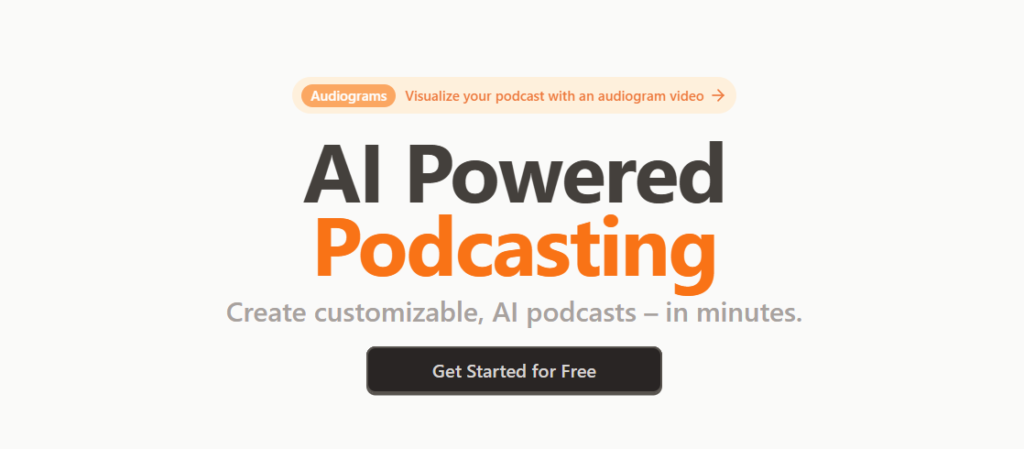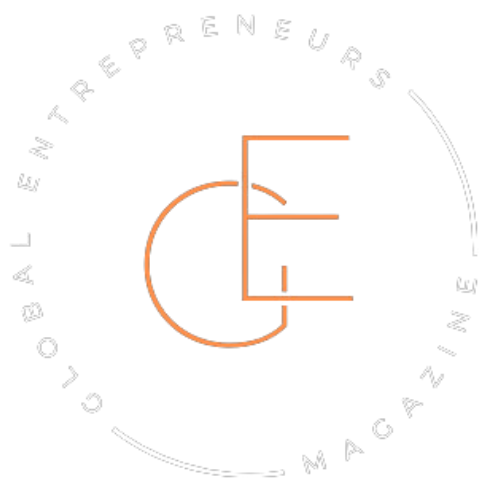We’re living in a world where everyone has a story—yet most will never be heard. Not because the ideas aren’t powerful, but because the tools to share them have been too complex, too time-consuming, or too costly.
That’s the bottleneck Jellypod exists to break. Co-founded by Jason Alfani, this AI-powered podcast studio doesn’t aim to replace human voices. It exists to free them. As Jason put it (paraphrased):
“There’s a world of stories—99% of stories—that are untold. Jellypod unlocks them.”
In this conversation with AI expert Sam Sammane, they dove deep into how Jellypod is reshaping podcasting, not through hype, but through utility, ethics, and pure storytelling power.
This isn’t the death of human creativity. It’s its next evolution.
Meet the founder: A storyteller rooted in tech
Before Jellypod, Jason Alfani spent over a decade inside Silicon Valley’s most ambitious startups, leading growth and marketing functions where content wasn’t just a tactic. It was the engine.
He lived through the grind of content creation: the webinars, the interviews, the endless podcast planning. And he noticed something most people missed—great ideas were constantly getting lost in the shuffle. The process was too slow. Too technical. Too rigid.
Then he met Pierson, now his co-founder, and everything clicked.
“We realized there was a massive opportunity to help people make these very valuable pieces of content—webinars, podcasts—in a very streamlined way,” Jason shared. And they weren’t chasing novelty. They were solving a real problem:
“Ninety percent of podcasts don’t make it past the third episode.”
That stat revealed a hidden truth: people want to tell stories—but they’re getting blocked by time, tools, or technical friction. Jellypod was built to remove those blocks, not just for marketers, but for anyone with a perspective the world deserves to hear.
What Jellypod really is (and what it isn’t)
Jellypod is a full-scale podcast studio in your browser—built for busy people who have something valuable to say but no time to jump through hoops.
At its core, Jellypod lets users:
- Clone their own voice (only if they have the rights)
- Design AI co-hosts with distinct personalities and backstories
- Feed in outlines, research, or raw ideas
- Edit the AI-generated script
- Hit one button to generate studio-quality audio
- Instantly distribute to platforms like Apple Podcasts, Spotify, YouTube, or any RSS-enabled service
The real power? It compresses what used to take hours into minutes—without sacrificing quality. As Jason put it:
“We believe that user experience is very streamlined… If you feel comfortable using a Word doc, it should be as simple as that.”
But just as important as what Jellypod does is what it doesn’t. It doesn’t allow unauthorized voice cloning. It doesn’t support the misuse of AI for deception. It doesn’t compromise creative integrity for the sake of automation.
“We support [voice cloning] only if people have the rights… but we don’t support people duplicating voices that they have no rights to,” Jason made clear.
Jellypod doesn’t want to kill traditional podcasting. It wants to 100x it—without replacing the human behind the mic.

The podcasting analogy: Why Jellypod is like the iPhone for storytelling
Think about photography before smartphones. It was expensive, technical, and limited to professionals. Today, everyone’s a photographer and the medium has exploded because the barriers disappeared.
Jason sees podcasting heading in the same direction.
“If you go back 100 years, photography was only in the hands of a few people… Fast forward to today, everyone takes photos of their family many times a day,” he explained. “You still have professionals. You still have competitions. But the medium is now accessible to all.”
That’s the model Jellypod follows. It’s not here to drown the internet in low-quality noise. It’s here to unlock the floodgates of potential that have been bottled up by time, tech, and friction.
Of course, the inevitable fear comes up: Will AI podcasts saturate the space? Will quantity overwhelm quality?
Jason answered this head-on:
“Yes, you could automate thousands of things—but there’s no guarantee that it’ll be good. If you can make thousands of high-quality things that people want to listen to, more power to you.”
In the end, the content that resonates will rise—just as it does on TikTok, Instagram, or YouTube. Jellypod simply gives people the chance to compete on that stage.
Who Jellypod is built for—and who’s surprising them
When Jellypod launched, the team had a clear vision of who would use it first: marketers, business owners, and educators. People already invested in content, already familiar with storytelling, already short on time.
They were right—but only partly.
What happened next surprised even Jason.
“Doctors. Lawyers. Very busy people who don’t have enough time in the day to do something like this,” he said.
“They work all day, work all night, but for a few minutes every day, they come in and convert that day’s insight into something for the world to enjoy.”
That’s where Jellypod proves its real value—not just in enabling pros to scale content, but in empowering people who never thought they had the time to podcast at all.
Because Jellypod isn’t turning everyone into a podcaster. It’s helping people share what they already know in a way that fits their life—not disrupts it.
It’s a quiet revolution—and it’s not just for the usual creators anymore.
The ethics and moderation of AI-generated content
AI opens doors—but without boundaries, it can also open risks. Jellypod isn’t blind to that. From day one, ethical use has been a core design principle.
Voice cloning? Only with rights.
Content moderation? Built-in from the ground up.
Jellypod draws a clear line between enabling creativity and protecting against abuse.
“We have a moderation system in place—both at the script level and the audio level,” Jason explained. “It’s not to police misinformation. It’s more focused on harmful content—very violent things, very graphic things.”
That distinction matters. Jellypod isn’t in the business of censorship. It’s in the business of creative integrity—of making sure the platform remains safe, usable, and focused on quality storytelling.
All moderation is automated, but constantly improving. And the goal isn’t to control what people say but to ensure that abuse doesn’t drown out value.
Because in a space where anyone can create, trust in the platform becomes just as important as the tools themselves.
How customizable is Jellypod? Extremely.

Jellypod doesn’t stop at letting you speak. It lets you shape the entire voice behind your show—literally and creatively.
You can start by cloning your own voice (ethically, with permission). But that’s just the beginning. What sets Jellypod apart is the ability to design AI co-hosts with their own backstories, tones, and personalities—and let them interact like real people would.
“Beyond just customizing voices, you want to customize the backstories,” Jason stated.
“That leads to people who talk differently, sound differently, and who have different dynamics between each other.”
He’s not speaking hypothetically. Jason has built podcasts using Jellypod that simulate:
- A heated debate between political extremes
- An astrophysics professor teaching a freshman on their first day of class
- And countless other nuanced, dynamic exchanges—without needing a full production crew
Jellypod doesn’t ask you to fit into a generic format. It gives you the flexibility to build the podcast you imagined—voices, tone, flow, even the personalities involved.
That’s not a feature. That’s creative control.
Beyond audio: The future of visual storytelling with Jellypod
Jellypod started with voice—but it was never going to stop there. Because storytelling isn’t just heard anymore. It’s seen. It’s animated. It’s visual.
Jason and the team understand this.
“We are actively working on a few different threads—but one of them is definitely visual,” he revealed. “In today’s day and age, visuals are a big part of storytelling. Video is a big part of storytelling.”
The vision? To expand Jellypod into a platform that helps users bring their stories to life in every format that matters.
They’re already exploring:
- AI agents that handle research
- Visual agents that build charts or explainer graphics
- Multi-format outputs for richer content delivery
Jellypod isn’t building for where content is. It’s building for where storytelling is going.
Startups, speed, and the age of solo-scale impact
This is the best—and wildest—time to be building something. Tools are getting smarter. Timelines are getting shorter. And one person with a focused vision can now do what used to take a team.
Jason sees this shift firsthand.
“It’s an incredible time for startups,” he said.
“The impact that one person can have is so much larger… You just go down the list of AI startups and see the valuations relative to how few people work there.”
But speed without wisdom can be dangerous. That’s why Jason shares three principles every founder should hold onto:
- Launch fast – “Your startup isn’t much until it has users.”
- Protect quality – “Don’t sacrifice quality just to get something out.”
- Stay lean – “Be very cost efficient… similar breakthroughs are always around the corner.”
This is all about staying sharp, shipping smart, and knowing that in today’s environment, the window for action opens and closes faster than ever.
Jellypod’s own journey reflects that ethos—focused, fast, and built to serve from day one.
Three musts for anyone getting started with AI today
AI is becoming the new literacy—the skill that separates those who adapt from those who fall behind. But jumping into AI doesn’t mean abandoning what you know. It means amplifying it.
Jason laid it out simply:
“Don’t try to chase something that isn’t you.”
Here’s how he breaks it down for anyone looking to bring AI into their world:
1. Start with what you already do
Look at your current work. Then ask: How could AI help me do this better? The goal isn’t to become something else. It’s to become exceptional at what you already are.
“Whatever you’ve been doing… find ways to utilize [AI] to become the best of that thing.”
2. Stay aware of what’s happening around you
The edge often comes from adjacent industries.
“Listen to cross-industry applications—something similar to what you do, but not exactly what you do,” Jason advised.
That’s where inspiration strikes.
3. Keep experimenting
Don’t expect every AI tool to work perfectly the first time. The real progress comes from iteration.
“Just because you tried one thing and it didn’t work out doesn’t mean you should stop experimenting,” he said.
The takeaway? You don’t need to master AI overnight. You just need to show up, stay curious, and keep refining—because the gap isn’t between people and AI. It’s between people who use it… and those who don’t.
Final message: If you’ve got something to say, now’s your moment
The tools are ready. The barriers are gone. The only thing left is your story—and the decision to tell it.
That’s the heart of Jellypod’s mission. It’s not just software. It’s a call to action for creators, experts, and everyday professionals who’ve held back because podcasting seemed too hard, too technical, too time-consuming.
Jason put it simply:
“The barriers to creativity—the barriers to audio storytelling—have been lifted.”
But he didn’t stop there. He urged people to go deeper.
“Think about your unique perspective. Think about what amazing stuff you’ve learned over your life… and find a way to get it out into the world.”
Jellypod exists so you can do exactly that—without friction, without compromise, and without waiting.
If you’ve been sitting on knowledge, waiting for the perfect time to share, this is it.
The mic is open. The platform is built. The only thing missing—is you.
Ready to tell your story? Jellypod is here for it
If you’ve ever thought, “I don’t have time to start a podcast,”—you’re exactly who Jellypod was built for.
If you’ve ever said, “I wouldn’t even know where to begin,”—Jellypod starts with a single click.
This isn’t about going viral. It’s about making your voice heard, your knowledge accessible, and your story real.
“We’re here to help people get the vision out of their head and into the hands of others,” Jason said. And that’s exactly what Jellypod delivers—week after week, creator after creator.
If you’re ready to stop waiting and start creating—head to Jellypod and start your podcast in minutes.
Because your story deserves to be heard. And now, there’s no excuse not to tell it.
| The Global Entrepreneurship Club Editorial Team



